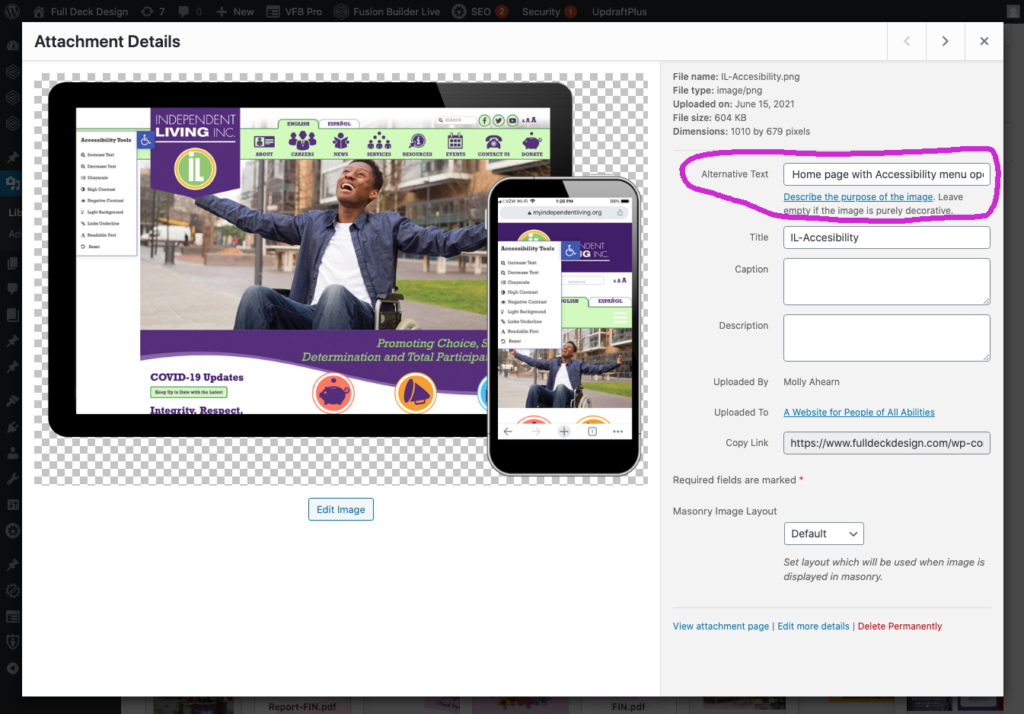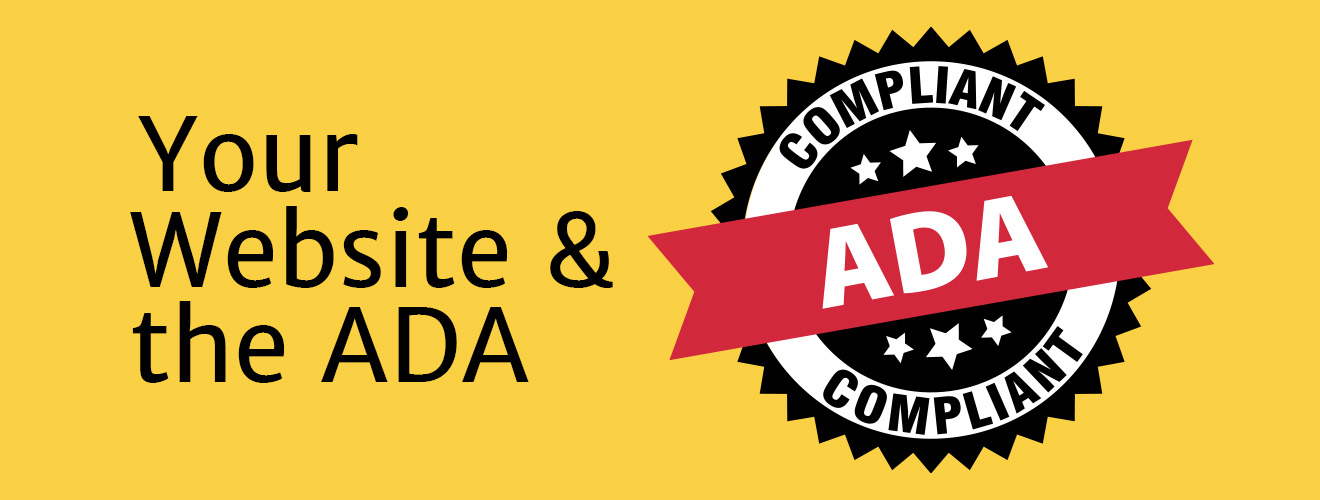Your Website and the ADA
What’s on your checklist to create and maintain a website for your business? The usual list includes a logo and graphics, content, photos, perhaps a slick shopping cart. Often there’s something substantial missing from the checklist.
When you think about creating a website for your business, you need to make sure it’s ADA compliant. And not just because it’s a considerate gesture, but because it’s the law. You are legally required to comply with the Americans with Disabilities Act/Section 508.
Section 508 of the Rehabilitation Act (29 U.S.C. § 794d) requires that Federal agencies’ electronic and information technology is accessible to people with disabilities, including employees and members of the public.*
And if you fail to comply, it can lead to legal ramifications. Basically, if folks with visual or hearing impairments cannot access your website, it won’t be sufficient, and you can be taken to court and heavily fined. This is especially crucial to nonprofits.
Ignorance is not an excusable defense, so here’s how you get ahead of it.
To be welcoming is to be inclusive.
You want everyone who clicks on your website to have a good experience and to achieve that, your site should be accessible to everyone, just like a brick-and-mortar store. When you engage your web developer, but this consideration is at the top of your priority list. Just like you would a contractor who builds your store. Develop your website with the foundation of inclusion and compliance. It will naturally become a part of the fabric of your operations.
Best Practices
Alt Text
The most frequent reason for complaints about non-compliance is the lack of Alternate Text. Alt text (as it is known) is a short, written description of an image. For example,

This practice is CRITICAL. Every image on your site should include text in this box that is read aloud to blind and vision-impaired visitors on your site. It’s also worth noting that this practice is also vital to your SEO.
Fonts
Fonts should be easy to read. Size and style play into how accessible your type is on your website. If we go back to the store analogy, imagine if the aisles were too small to see the merchandise. You want the reader to easily ‘see’ your content. Fonts should be at least 14 and be simple in style: Arial, Helvetica, Tahoma, Times New Roman, and Verdana.
You also want to have appropriate contrast between the text and the background. You want to avoid light color on a light background or anything that causes the reader to strain. So your color choice is essential as well.
Design
Be sure that your site is easy to navigate. Internal hyperlinks are a big part of any website to access additional information. Usually, there are visual clues for a sighted person, specifically a different color. Someone with a visual impairment may not be able to see the color difference. Therefore, it inhibits the ease with which they can go from page to page or other websites from your page.
Also, minimize blinking, flashing, or other distracting elements as a general rule.
Make it clear
If you do have actual brick-and-mortar locations, be sure to include text and information about accessibility in the physical locations such as wheelchair access, lifts, toilets, blind or low vision accommodations such as signage, ASL, and audio templates, etc.
Create a page on the site that outlines the steps you’re taking to comply with ADA guidelines. Include a link or contact form to allow site users to share problems or difficulties navigating the site. At the very least, provide a phone number and/or email address for people to request accessible information or services.
If you already have a published website, you can take steps to ensure that it is as accessible as possible. You can have a professional audit done and get a scope of what needs to be changed. If you are in the beginning stages of building a website, consider what it takes to be in compliance from the start. Creating and maintaining an accessible website is a standard to be upheld. After all, it doesn’t just benefit people with disabilities; it benefits everyone.
